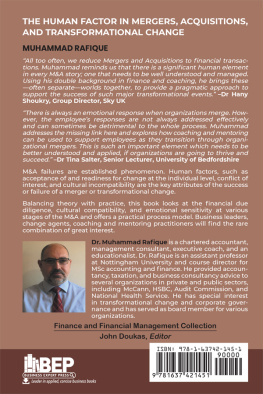Kim J. Vicente - The Human Factor
Here you can read online Kim J. Vicente - The Human Factor full text of the book (entire story) in english for free. Download pdf and epub, get meaning, cover and reviews about this ebook. year: 2004, publisher: Vintage Canada, genre: Politics. Description of the work, (preface) as well as reviews are available. Best literature library LitArk.com created for fans of good reading and offers a wide selection of genres:
Romance novel
Science fiction
Adventure
Detective
Science
History
Home and family
Prose
Art
Politics
Computer
Non-fiction
Religion
Business
Children
Humor
Choose a favorite category and find really read worthwhile books. Enjoy immersion in the world of imagination, feel the emotions of the characters or learn something new for yourself, make an fascinating discovery.

- Book:The Human Factor
- Author:
- Publisher:Vintage Canada
- Genre:
- Year:2004
- Rating:5 / 5
- Favourites:Add to favourites
- Your mark:
- 100
- 1
- 2
- 3
- 4
- 5
The Human Factor: summary, description and annotation
We offer to read an annotation, description, summary or preface (depends on what the author of the book "The Human Factor" wrote himself). If you haven't found the necessary information about the book — write in the comments, we will try to find it.
The Human Factor — read online for free the complete book (whole text) full work
Below is the text of the book, divided by pages. System saving the place of the last page read, allows you to conveniently read the book "The Human Factor" online for free, without having to search again every time where you left off. Put a bookmark, and you can go to the page where you finished reading at any time.
Font size:
Interval:
Bookmark:
HARVARD UNIVERSITY, AND AUTHOR OF
The Blank Slate AND How the Mind Works
New York & London
| Published in 2006 by | Published in Great Britain by |
| Routledge | Routledge |
| Taylor & Francis Group | Taylor & Francis Group |
| 711 Third Avenue, | 2 Park Square |
| New York, NY 10017 | Milton Park, Abingdon |
| Oxon OX14 4RN |
Routledge is an imprint of Taylor & Francis Group
Published in arrangement with Alfred A. Knopf Canada, a division of Random House of Canada, Limited.
International Standard Book Number-13: 978-0-415-97891-0 (Softcover)
Library of Congress Card Number 2003067247
mechanical, or other means, now known or hereafter invented, including photocopying, microfilming, and
recording, or in any information storage or retrieval system, without written permission from the publishers.
for identification and explanation without intent to infringe.
The human factor : revolutionizing the way people live with technology / Kim
Vicente.1st ed.
p. cm.
ISBN 0-415-97891-2 (pb : alk. paper)
1. TechnologySocial aspects. 2. Human engineering. 3. Human-computer interaction.
T14.5 V52 2004
620.82dc22 200367247

http://www.tylorandfransis.com
http://www.routledge-ny.com

TECHNOLOGY WREAKING HAVOC
TECHNOLOGY FOR HUMANS
REGAINING CONTROL OF OUR LIVES

Nonzero: The Logic of Human Destiny
The Sleepwalkers

Preface

Font size:
Interval:
Bookmark:
Similar books «The Human Factor»
Look at similar books to The Human Factor. We have selected literature similar in name and meaning in the hope of providing readers with more options to find new, interesting, not yet read works.
Discussion, reviews of the book The Human Factor and just readers' own opinions. Leave your comments, write what you think about the work, its meaning or the main characters. Specify what exactly you liked and what you didn't like, and why you think so.










